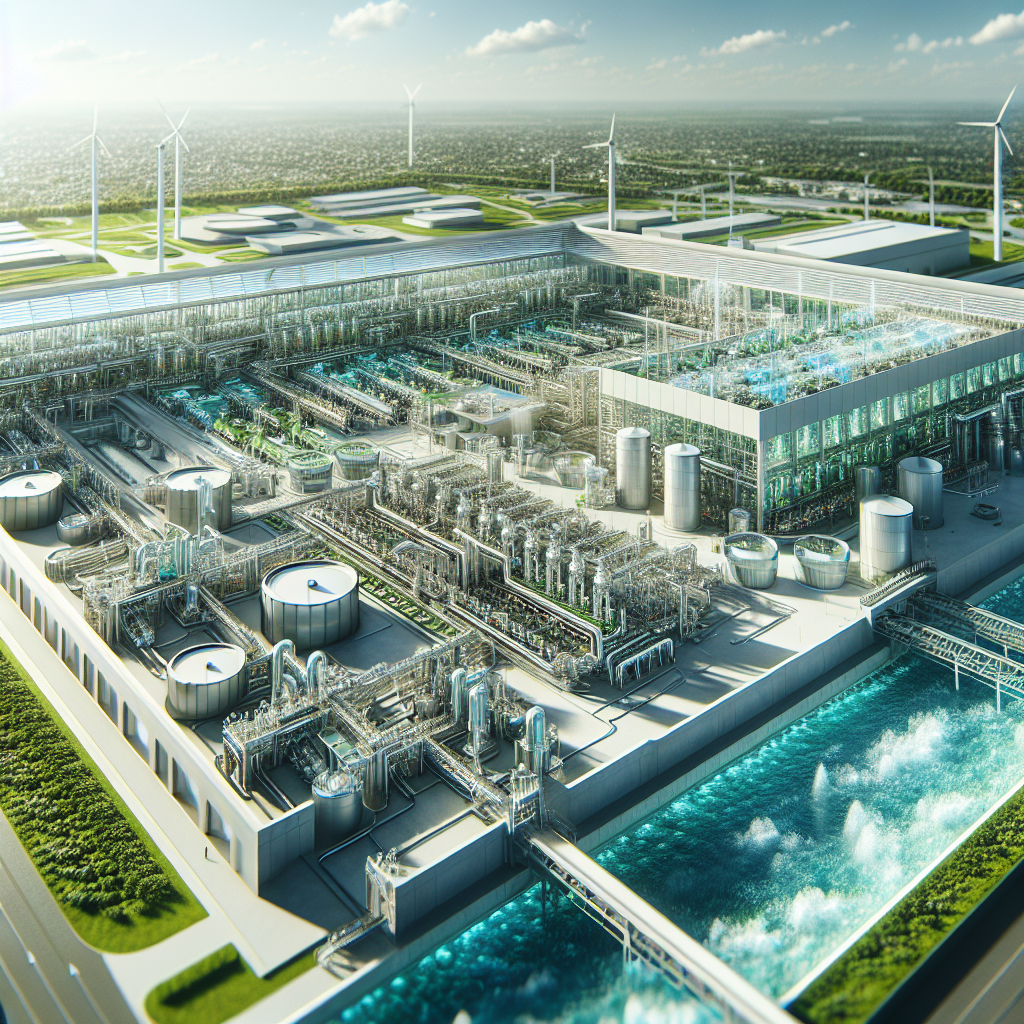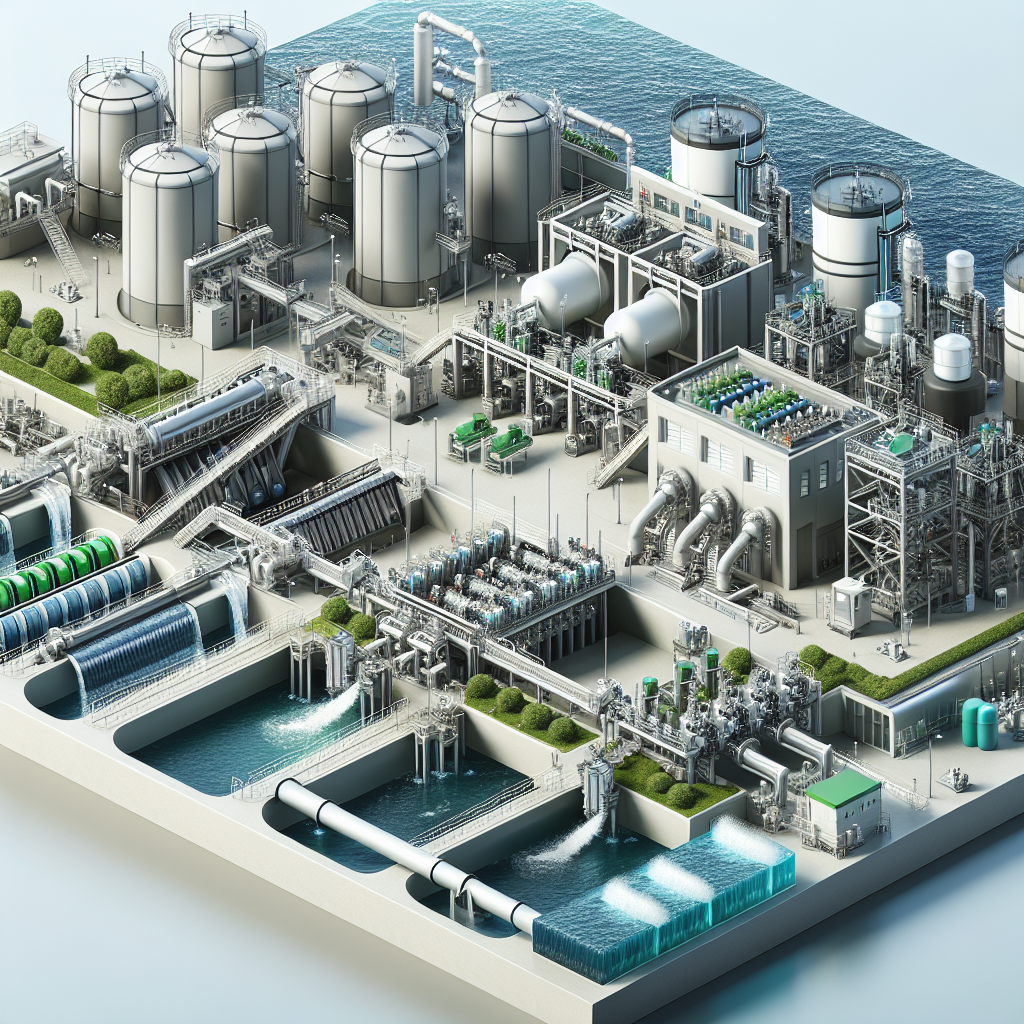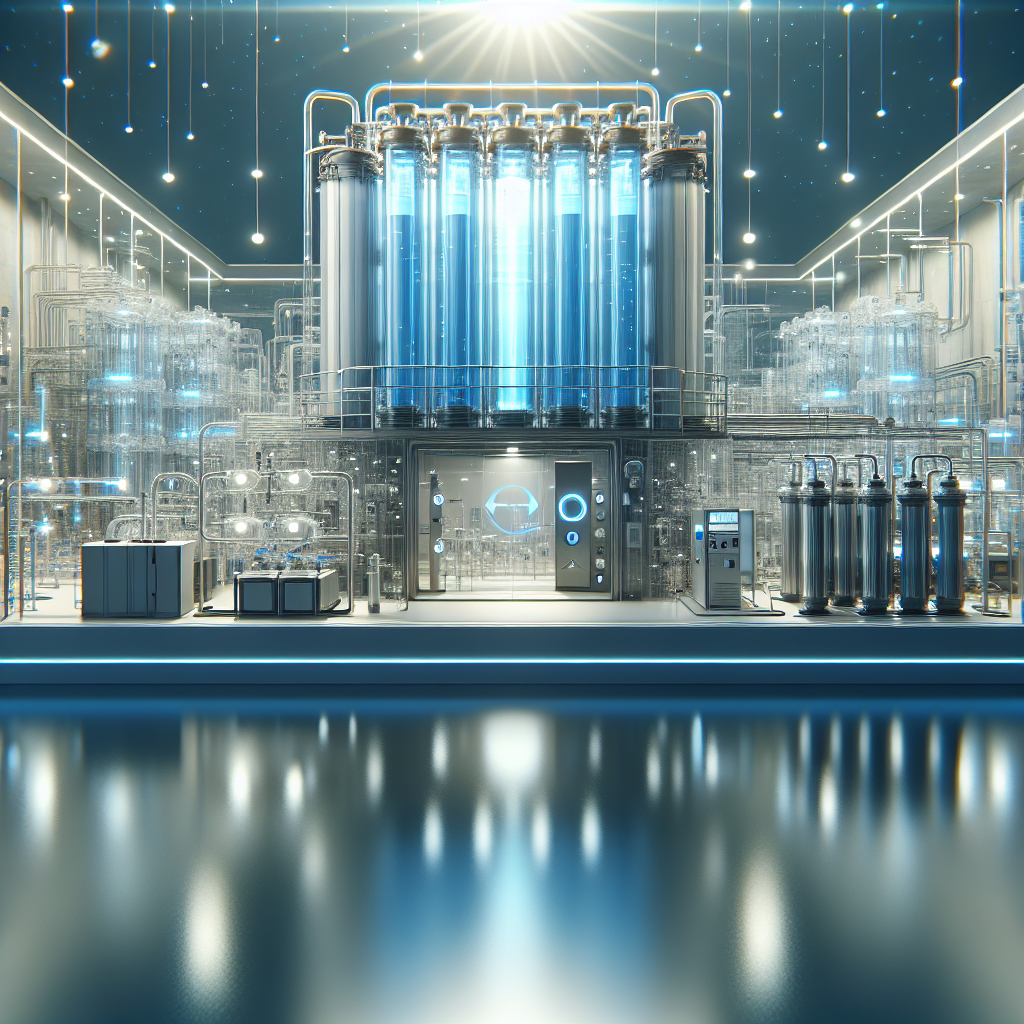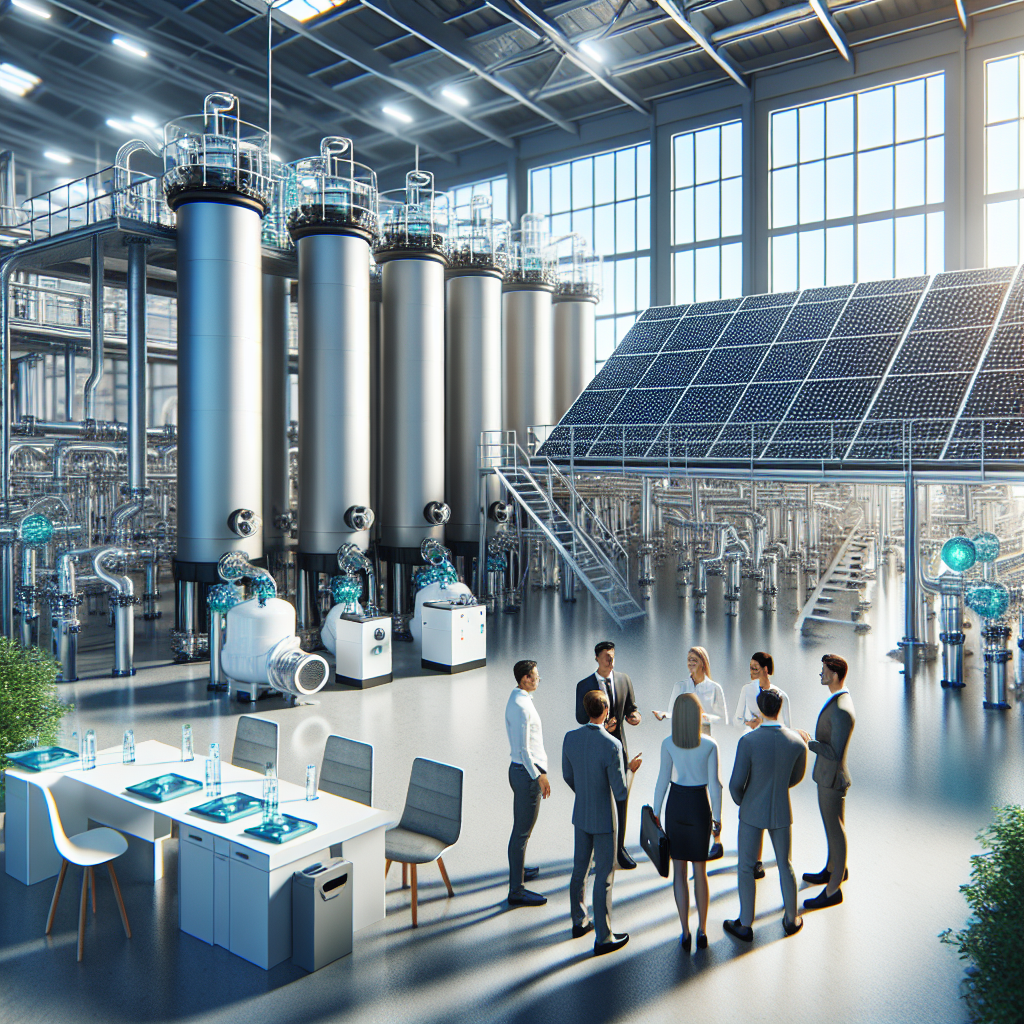Modern Water Treatment Plants: Design and Operations
Introduction
Welcome to the fascinating world of water plant treatment, where science meets sustainability in a quest to provide clean, safe drinking water for all! Imagine a bustling city where every drop of water is treated with the utmost care, ensuring that it meets the highest standards for water purification. Sounds like magic? Well, it’s just modern engineering at work!
As populations grow and climate change raises the stakes, the importance of efficient wastewater treatment and innovative water treatment processes has never been more critical. From sewage treatment plants to advanced industrial water treatment, these facilities are the unsung heroes ensuring our water quality management remains top-notch.
You might be wondering, what exactly goes on behind those sturdy walls? Spoiler alert: it’s not just about filtering out coffee grounds and rubber duckies! The journey from raw sewage to potable water involves a series of intricate steps including primary, secondary, and tertiary wastewater treatments. And let’s not forget about the high-tech toys like reverse osmosis systems and UV disinfection in water plants that make this magic happen!
In this blog post, we’ll dive deep into the design and operations of modern water treatment plants. We’ll explore everything from cutting-edge technologies like membrane filtration to sustainable practices that keep our planet happy while providing us with clean H2O. So grab your goggles (metaphorically speaking), and let’s plunge into this essential topic!

Overview of Water Plant Treatment
Water plant treatment is the superhero of our modern infrastructure, swooping in to save the day by ensuring that the water we consume is safe and clean. Think of it as a multi-stage process, where water undergoes a series of transformations, much like a caterpillar turning into a butterfly only this time, we’re transforming murky water into sparkling potable goodness.
Definition and Importance
At its core, water plant treatment refers to the processes that make water suitable for its intended use. This can range from drinking water treatment to industrial applications. It’s crucial not only for public health but also for environmental sustainability. Without effective treatment, we’d be swimming in a sea of trouble literally!
Historical Context
The journey of water treatment dates back thousands of years. Ancient civilizations used sand and gravel filters to purify their drinking supplies. Fast forward to today, and we’ve got advanced technologies like reverse osmosis systems and UV disinfection making waves in the industry. It’s like watching a sci-fi movie unfold right before our eyes!
Current Trends in Water Treatment
The landscape of water treatment processes is evolving rapidly. Here are some trends that are currently shaping the industry:
- Sustainable Practices: Facilities are adopting energy-efficient designs and green technologies such as solar-powered pumps.
- Advanced Oxidation Processes: These methods are becoming popular for treating challenging contaminants.
- Smart Water Management: The use of IoT devices allows for real-time monitoring and management of water quality.
- Circular Economy Approaches: Efforts to recycle wastewater through processes like anaerobic digestion are gaining traction.
The future looks bright and clean! As municipalities and industries embrace these innovations, we can expect more efficient systems that conserve resources while delivering high-quality water.
Key Components of Modern Water Treatment Plants
When it comes to water plant treatment, the key components are like the Avengers of clean water. Each plays a unique role in making sure our drinking water is safe and our wastewater is treated effectively. Let’s break down these heroes of hydration!
Water Filtration Systems
A robust water filtration system is essential for any modern water treatment plant. Think of it as the bouncer at an exclusive club, ensuring only the finest H2O gets through. Common methods include:
- Microfiltration and Ultrafiltration: These processes use membranes to filter out particles and pathogens, ensuring crystal-clear water.
- Reverse Osmosis Systems: This high-tech approach pushes water through a semi-permeable membrane, removing contaminants like salts and heavy metals.
- Ionic Exchange Process: Perfect for softening hard water, this process swaps out undesirable ions with more favorable ones.
Sewage Treatment Plant Design
The design of a sewage treatment plant (STP) is crucial for effective wastewater treatment. It’s not just about aesthetics; functionality reigns supreme! Here are some core components:
- Activated Sludge Process: This biological method uses aeration tanks to promote the growth of microorganisms that digest organic matter.
- Sedimentation Tanks: After biological treatment, these tanks allow solids to settle out, separating sludge from treated effluent.
- Tertiary Treatment Processes: This final stage often includes advanced filtration or disinfection processes like UV disinfection or chlorination to ensure high-quality effluent.
Effluent Treatment Plant Features
An effective effluent treatment plant (ETP) can be the difference between pollution and preservation. Key features include:
- Chemical Water Treatment Methods: Utilizing coagulation and flocculation helps aggregate smaller particles into larger ones for easier removal.
- Anaerobic Digestion in Wastewater Treatment: This process breaks down organic material without oxygen, producing biogas that can be harnessed as energy talk about recycling!
- Sustainable Practices: Many modern ETPs incorporate energy-efficient designs and technologies such as stormwater management systems to minimize environmental impact.
Did you know? The average person uses about 80-100 gallons of water per day! Efficient water plant treatment ensures that this vital resource remains clean and sustainable.

Water Treatment Processes
When it comes to water plant treatment, the processes involved are like a well-choreographed dance, ensuring that every drop of water is treated to perfection before it reaches your tap. Let’s break down these essential steps, shall we?
Primary Wastewater Treatment
Think of this as the first filter in your favorite coffee machine. Primary treatment focuses on removing large solids and debris from wastewater through physical processes such as sedimentation. This step is crucial because it sets the stage for all subsequent treatments.
Secondary Wastewater Treatment
This step is where the magic happens! Secondary treatment aims to remove dissolved organic matter and pathogens using biological processes. It typically involves the activated sludge process, where microorganisms munch away at the organic pollutants, leaving cleaner water behind. It’s like sending your wastewater to a spa day!
Tertiary Wastewater Treatment
Now we’re getting fancy! Tertiary treatment is all about polishing that water until it sparkles. This process may involve advanced techniques such as membrane filtration, chemical treatments, or even UV disinfection. The goal? To produce effluent that meets or exceeds water quality standards for various uses, including irrigation and industrial applications.
Anaerobic Digestion in Wastewater Treatment
If you thought waste was just waste, think again! Anaerobic digestion takes place in a low-oxygen environment where bacteria break down organic matter, producing biogas that can be harnessed for energy. It’s like turning leftovers into a delicious meal sustainable and resourceful!
Chemical Water Treatment Methods
- Coagulation and Flocculation: These processes involve adding chemicals to clump together impurities into larger particles, making them easier to remove.
- Chlorination: A classic method used to disinfect water by killing harmful pathogens. Think of it as giving your water a safety net.
- UV Disinfection: Using ultraviolet light to zap away germs without adding any chemicals it’s like giving water a superhero cape!
Takeaway: Understanding these water treatment processes not only helps us appreciate the complexity behind clean drinking water but also emphasizes the importance of sustainable practices in our daily lives.
If you’re involved in municipal planning or engineering, knowing these processes can help you make informed decisions about future projects. Dive deeper into each method and explore how modern technologies are reshaping our approach to clean water production!
Advanced Technologies in Water Purification
Welcome to the future of water plant treatment, where advanced technologies are transforming the way we think about water purification! If you thought water treatment was just about filtering out the big stuff, think again. We’re diving into some seriously cool tech that’s making waves in the industry.
Reverse Osmosis Systems
First up, we have reverse osmosis systems. Imagine a super-sieve that only lets water molecules pass through while blocking out impurities like a bouncer at an exclusive club. This process is crucial for drinking water treatment, especially in areas where natural water sources are less than pristine.
Did you know? Reverse osmosis can remove up to 99% of dissolved salts and organic matter, making it a go-to technology for both residential and industrial applications!
Membrane Filtration: Microfiltration and Ultrafiltration
If reverse osmosis is the bouncer, then membrane filtration is the VIP lounge. It includes both microfiltration and ultrafiltration, which use fine membranes to separate particles from liquids. These processes are particularly effective for treating wastewater from various sources, including sewage treatment plants and industrial effluent management.
- Microfiltration: Removes larger particles like bacteria and suspended solids.
- Ultrafiltration: Targets smaller contaminants such as viruses and colloids.
Ionic Exchange Process in Water Purification
The ionic exchange process is like a game of musical chairs for ions. It swaps undesirable ions (like calcium or magnesium) for more desirable ones (like sodium), effectively softening hard water. This method plays a critical role in both industrial water treatment and potable water production.
“Ionic exchange processes can significantly improve water quality by reducing hardness and removing heavy metals.” – Water Quality Management Journal
Advanced Oxidation Processes (AOP)
If you want to get fancy, let’s talk about advanced oxidation processes (AOP). These techniques use powerful oxidants to break down pollutants that traditional methods might miss. Think of it as giving your wastewater a superhero makeover!
- Ozone Treatment: Ozone gas is injected into wastewater, creating hydroxyl radicals that oxidize contaminants.
- UV/Hydrogen Peroxide: A combination of UV light with hydrogen peroxide produces hydroxyl radicals for enhanced degradation of organic pollutants.

The integration of these advanced technologies not only enhances the efficiency of the overallwater treatment process, but also helps in achieving sustainability goals by reducing energy consumption and improving effluent quality.
Takeaway: Embracing these cutting-edge technologies can lead to better resource management and cleaner drinking water an essential step towards sustainable urban living!
Sustainable Practices in Water Treatment Facilities
As we dive into the world of water plant treatment, it’s crucial to highlight the sustainable practices that are transforming water treatment facilities into eco-friendly powerhouses. The goal? To ensure that while we purify and manage our water resources, we do so with minimal impact on our planet.
Energy-Efficient Wastewater Treatment Systems
Modern engineers are embracing energy-efficient designs that not only cut costs but also reduce the carbon footprint of wastewater treatment. Think of it as giving a spa day to your sewage treatment plant! Here are some key strategies:
- Optimized Pumping Systems: Using variable frequency drives (VFDs) allows pumps to adjust their speed based on demand, reducing energy consumption significantly.
- Advanced Oxidation Processes: These systems improve chemical water treatment efficiency, often requiring less energy than traditional methods.
- Activated Sludge Process Innovations: Newer variations of this age-old method can operate with less aeration, cutting down on energy use while maintaining effective biological wastewater treatment.
Green Technologies Leading the Charge
The integration of green technologies is like adding a splash of green paint to an old fence it makes everything look better and function more efficiently. Some standout technologies include:
- Solar-Powered Pumps: Utilizing solar energy for pumping reduces reliance on fossil fuels and lowers operational costs.
- Wind Turbines: Harnessing wind power can supply a significant portion of a facility’s energy needs, making it a win-win for both budget and environment.
- Treatment Plant Green Roofs: Not only do these add aesthetic value, but they also help manage stormwater runoff and improve insulation for buildings.
Did You Know? Implementing sustainable practices in water treatment facilities can lead to a reduction in operational costs by up to 30% while improving overall efficiency!
The Role of Water Quality Management
Sustainable practices extend beyond just the physical treatments; they also encompass robust water quality management strategies. This includes:
- Tertiary Wastewater Treatment Techniques: Advanced filtration systems help ensure that effluents meet stringent quality standards before being released back into the environment or reused.
- Sewage Sludge Management Innovations: Techniques like anaerobic digestion not only process waste but also produce biogas that can be used as renewable energy.
- Circular Water Management Approaches: By treating and reusing wastewater for irrigation or industrial processes, facilities can significantly reduce freshwater demand.
The shift towards sustainable practices in water treatment facilities is not just a trend; it’s a necessity. By investing in energy-efficient systems and green technologies, municipalities can ensure clean drinking water production without compromising our planet’s health. So next time you think about your local water plant treatment facility, remember: it’s not just about cleaning water; it’s about saving the world one drop at a time!
Challenges and Solutions in Modern Water Management
Water management is like trying to juggle flaming torches while riding a unicycle it’s tricky, and one wrong move can lead to disaster. With increasing population, climate change, and industrial demands, the challenges in water plant treatment are more complex than ever. But fear not! There are solutions brewing that can help us stay balanced.
Water Quality Management Strategies
The first challenge is ensuring water quality management. Contaminants from agricultural runoff, industrial effluents, and even urban stormwater can wreak havoc on our precious water resources. Here’s where modern technology steps in with some superhero-level strategies:
- Advanced Oxidation Processes (AOPs): These techniques utilize powerful oxidants to break down pollutants that traditional methods might miss.
- Membrane Filtration: Techniques like microfiltration and ultrafiltration help create a barrier against contaminants, ensuring only the purest water flows through.
- Sustainable Practices: Incorporating green infrastructure such as rain gardens and permeable pavements can enhance stormwater management systems, reducing runoff pollution.
Wastewater Treatment Innovations
The second major hurdle is effectively treating wastewater. Traditional sewage treatment plants often struggle with efficiency and energy consumption. Enter innovative solutions that are changing the game:
- Anaerobic Digestion: This process not only treats wastewater but also generates biogas that can be used as renewable energy talk about a win-win!
- Tertiary Treatment Methods: Advanced filtration techniques ensure that treated water meets the highest standards for potable reuse or environmental discharge.
- Sewage Heat Recovery Systems: By capturing heat from wastewater, facilities can reduce energy costs significantly while maintaining effective treatment processes.
Did You Know?
The implementation of energy-efficient wastewater treatments can reduce operational costs by up to 30%, making them not just environmentally friendly but also economically viable!
Community Engagement and Education
An often overlooked aspect of modern water management is community engagement. Educating the public about water conservation practices can significantly reduce demand on our water plants. Here are some strategies:
- Public Awareness Campaigns: Informing communities about the importance of reducing water usage during droughts or peak seasons.
- Incentive Programs: Offering rebates for installing low-flow fixtures or rainwater harvesting systems encourages sustainable practices at home.
- Crowdsourcing Solutions: Engaging local communities in brainstorming sessions to tackle specific water issues fosters a sense of ownership and responsibility.

The road ahead may be filled with challenges, but by embracing innovative technologies and engaging our communities, we can navigate the complexities of modern water management with finesse. So let’s roll up our sleeves and dive into these solutions after all, clean drinking water is worth every ounce of effort!
The Future of Water Treatment Plants: Innovations and Trends
As we dive into the future of water plant treatment, it’s clear that we’re on the brink of a revolution. Imagine a world where water is not just treated but transformed into an invaluable resource, thanks to innovative technologies and sustainable practices. Let’s explore some exciting trends that are shaping the future of water treatment plants.
Smart Water Management Systems
Gone are the days when water treatment plants operated like a well-oiled machine without any brains. Enter smart water management systems! These systems utilize IoT (Internet of Things) technology to monitor and control various processes in real-time. Think of it as having a smart assistant for your water plant.
- Real-time Monitoring: Sensors can detect changes in water quality, allowing for instant adjustments in the treatment process.
- Predictive Maintenance: By analyzing data trends, plants can predict equipment failures before they happen, saving time and money.
Advanced Oxidation Processes (AOP)
AOPs are becoming a go-to for tackling stubborn contaminants that traditional methods struggle with. It’s like giving your water a superhero makeover! By combining ozone, hydrogen peroxide, and UV light, these processes break down pollutants at a molecular level.
Sustainable Practices Taking Center Stage
The quest for sustainability is more than just a trend; it’s a necessity! Modern water treatment facilities are increasingly adopting eco-friendly practices to minimize their carbon footprint:
- Zero Liquid Discharge: This approach ensures that no wastewater is discharged into the environment, promoting complete recycling.
- Energy Recovery Systems: Utilizing biogas from anaerobic digestion not only powers operations but also reduces reliance on external energy sources.
- Stormwater Management Systems: These systems capture rainwater and treat it for reuse, alleviating pressure on existing freshwater resources.
The Rise of Decentralized Treatment Solutions
No longer confined to large centralized facilities, decentralized treatment solutions are gaining popularity especially in urban areas. These mini-plants can be set up closer to where wastewater is generated, making them ideal for:
- Sewage Treatment Plant Alternatives: Smaller communities or even individual buildings can treat their own wastewater effectively.
- Industrial Water Treatment: Factories can manage their effluent on-site, reducing transportation costs and improving compliance with regulations.
The Role of Artificial Intelligence
If you thought AI was just for sci-fi movies, think again! In the realm of water treatment, AI algorithms are optimizing processes such as:
- Sludge Management: AI can predict sludge production rates and optimize removal schedules.
- Chemical Dosing: Precise dosing based on real-time data minimizes chemical use while ensuring effective disinfection processes in water treatment.
The future looks bright (and clean!) for our precious resource. As municipalities and engineers embrace these innovations in the water plant treatment landscape, we will see significant improvements in efficiency and sustainability. So buckle up it’s going to be an exciting ride!
Conclusion
As we wrap up our deep dive into modern water treatment plants, it’s clear that the world of water plant treatment is evolving faster than you can say “reverse osmosis.” With a blend of innovative technologies and sustainable practices, today’s facilities are not just about filtering out impurities; they are revolutionizing how we think about water as a precious resource.
The integration of advanced systems like membrane filtration, chemical water treatment, and cutting-edge biological wastewater treatment techniques are paving the way for cleaner, safer drinking water. Meanwhile, the challenges presented by climate change and population growth demand that we rethink traditional methods. Enter energy-efficient designs and green technologies, which promise to make our water management systems more resilient.
Key Takeaway: Modern water treatment plants are not just facilities; they are hubs of innovation that combine technology with sustainability to ensure safe drinking water for generations to come.
But let’s not forget the importance of education and community involvement in these processes. Municipalities and engineers must collaborate closely to ensure effective implementation of these systems. Misconceptions about wastewater management can lead to ineffective strategies, so clear communication is vital.
The future holds exciting possibilities: from enhanced stormwater management systems to improved methods in wastewater treatment, such as advanced oxidation processes. These innovations will not only help us tackle existing problems but also prepare us for future challenges in potable water production.
If you’re involved in designing or operating a wastewater facility, remember: every drop counts! Embrace these advancements and push for sustainable practices that protect our planet while providing essential services. Are you ready to take the plunge into this new era of water treatment?
source https://www.waterandwastewater.com/modern-water-treatment-plants-design-operations/

No comments:
Post a Comment